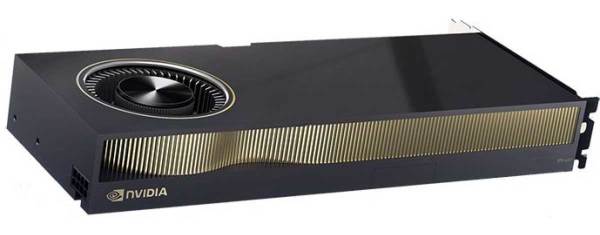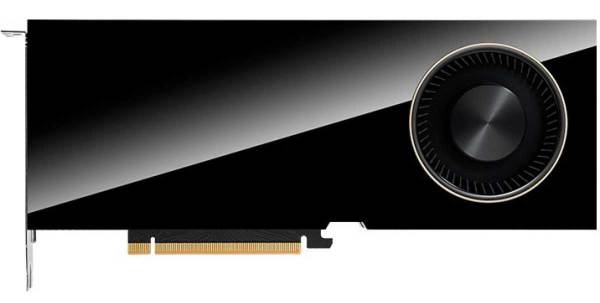Some US retailers are already listing the upcoming Ada-based  RTX 6000 graphics card. This is a workstation model based on the same architecture as the GeForce RTX 4090 (AD102 chip). The new name also makes it clear that Nvidia has changed its workstation naming and removed the typical "A". As a result, it is very easy to confuse the new ADA card RTX 6000 with the previous generation (RTX A6000).
RTX 6000 graphics card. This is a workstation model based on the same architecture as the GeForce RTX 4090 (AD102 chip). The new name also makes it clear that Nvidia has changed its workstation naming and removed the typical "A". As a result, it is very easy to confuse the new ADA card RTX 6000 with the previous generation (RTX A6000).
The RTX 6000 brings the AD102 with 142 streaming multiprocessors enabled. The RTX 4090 only activates 128 cores. On the other hand, the workstation model clocks a little tamer internally, because it does not have powerful dual-fan cooling and also no exaggerated TDP requirements (only 300W vs. 450W). That's why it also gets by with a dual-slot design and a single 8-pin power connector.

The Nvidia RTX 6000 gets by with an 8-pin power connector
However, the most important selling point for the considerable surcharge is the memory equipment. The RTX 6000 has 48 GB of GDDR6 memory on a 384-bit bus, which provides 960 GB/s of memory bandwidth. The RTX 4090 even achieves just over 1000 GB/s. The slightly lower power consumption and the slower memory therefore compensate for the increased number of cores and should hardly make the RTX 6000 faster than the RTX 4090. The latter costs 1,600 in the US without taxes, while the RTX 6000 is listed at a hefty (without taxes).

The Nvidia RTX 6000 comes with 48 GB memory
For video editing, 24 GB of GPU RAM should be sufficient most of the time, but for AI training, you can usually never have enough memory. The old RTX A6000, by the way, had a recommended price of ,649 and also had 48 GB of RAM with 768 GB/s connectivity. Those who are "only" looking for a lot of CUDA memory can perhaps discover a favourable alternative in this.

